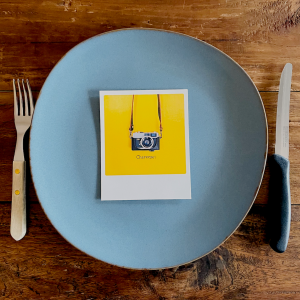
One of the speakers at The Photo Managers Congress (April 2021) was photographer and photo organizer Nicole Olds. She talked about the ‘digital photo diet’. So many, many, photos are taken; last year 1.43 billion worldwide. This comes of course from the fact that almost everybody has a camera permanently at hand – the smartphone. And people take photos of everything, literally everything. Not only to preserve pictures as memories, but also as a communication medium – often as things to share on the spur of the moment.
Sound familiar? – you take hundreds of photos so that you can be sure that you have taken at least one good one. And the camera and the computer can cope with the large number of images.
Or you use the camera as a notebook: a photo as reminder, reference, or evidence. Or maybe you walk about with an ‘Insta’ eye – would this be fun to post?
The fact is that in general we have (too) many photos. I too :).
You want to capture the feeling that you experience at a certain moment (Nicole Olds calls it ‘grazing’, ‘all you can eat’), and ultimately there is perhaps one photo that successfully recalls that feeling. Sometimes one photo is enough. More photos do not necessarily lead to more memories. Go for one good photo!
You can of course tidy your photos up, every week. But you can also approach it from the other direction: take fewer photos. Put yourself on a photo diet!
Go for experiencing the moment and not for capturing it with the camera (‘don’t spray and pray’). You can compare this with unwinding and minimalism. What do you really need, which photos are ‘keepers’?
Start by taking fewer photos. Perhaps a fixed number per day, or a fixed (small) number per event. Try this ruse: pretend that you are working with a roll of 36 photos.
And if you take many photos, sort them immediately. Are they Beautiful, Useful, or Sentimental (BUS)? Then they can stay. And you can use the ‘BUS’ at the moment that you are about to take a photo. Think again before you take yet another photo of an aeroplane wing, or yet another sunset. And if you take the photos anyway, decide immediately which one(s) you want to keep.
Less is more; this holds not only for possessions but also for photos. It is always a job to organize and maintain them.



